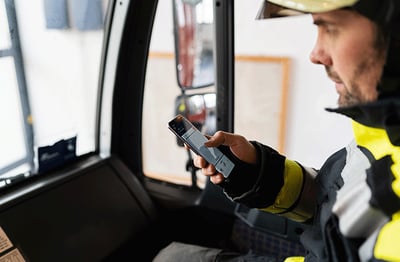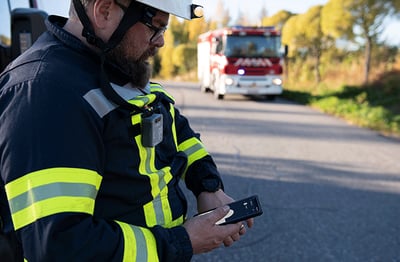Applications for smartphones go together like strawberries and cream – but where there are apps, there is danger for the smartphone user.
Because they are widely used and easy to develop software for, cybercriminals are increasingly targeted Android-based and other mobile devices, using apps as a way in. How should professionals safeguard against this threat?
Beware of malware
Mobile malware has evolved beyond extracting data and in the worst case, malware can now take over the whole device. In other words, hackers could take control of the smartphone, sending spamming texts, making false charges to a phone bill and other nasty activities.
This is bad enough for the private user, who risks the criminal gaining access to their bank details. But for the professional or corporate user, the risks can be on a whole new level – corporate accounts, strategies and product information are all vulnerable. And interference with emergency services’ communications could cost lives.

Things are especially risky if the users are allowed to download applications directly from the marketplace.
Want to be better prepared? Learn more about the security threats related to smartphones - download the white paper “How to manage smartphone risks for professional users” :
What can be done?
There is some good news for the security conscious user.
Android apps cannot directly access the underlying hardware - layers of software act as a barrier between the application and the device itself.
These layers allow several functions to keep malware at bay. Users can:
- install anti-malware capability
- verify that downloaded apps are authentic
- install security updates
- enable whitelisting of trusted apps.
Professionals are increasingly interested in hybrid dual-mode devices that combine the functionality and security of PMR standards, such as TETRA, with the broadband capabilities of LTE.
Hybrid devices should have several safeguards, including application control and signing for malware protection. Hybrid devices based on the Android platform should be operated without Google Mobile Services. Secure data storage and secure IP communication are other must-haves.
These safeguards are in place in Tactilon Dabat, the hybrid device from Airbus.
Do you want your professional device to have safeguards against a variety of threats? Download the white paper “How to manage smartphone risks for professional users” and learn how:
Hand-picked related content:
"How to use TETRA and smartphones in a hybrid way" - Good answers to the question "how does TETRA fit with smartphones" !
"This is what professionals really want to know about hybrid devices” - Explains what the term "hybrid device" really means.
This blog post was updated in August 2019 to include links to new, related and relevant content.





